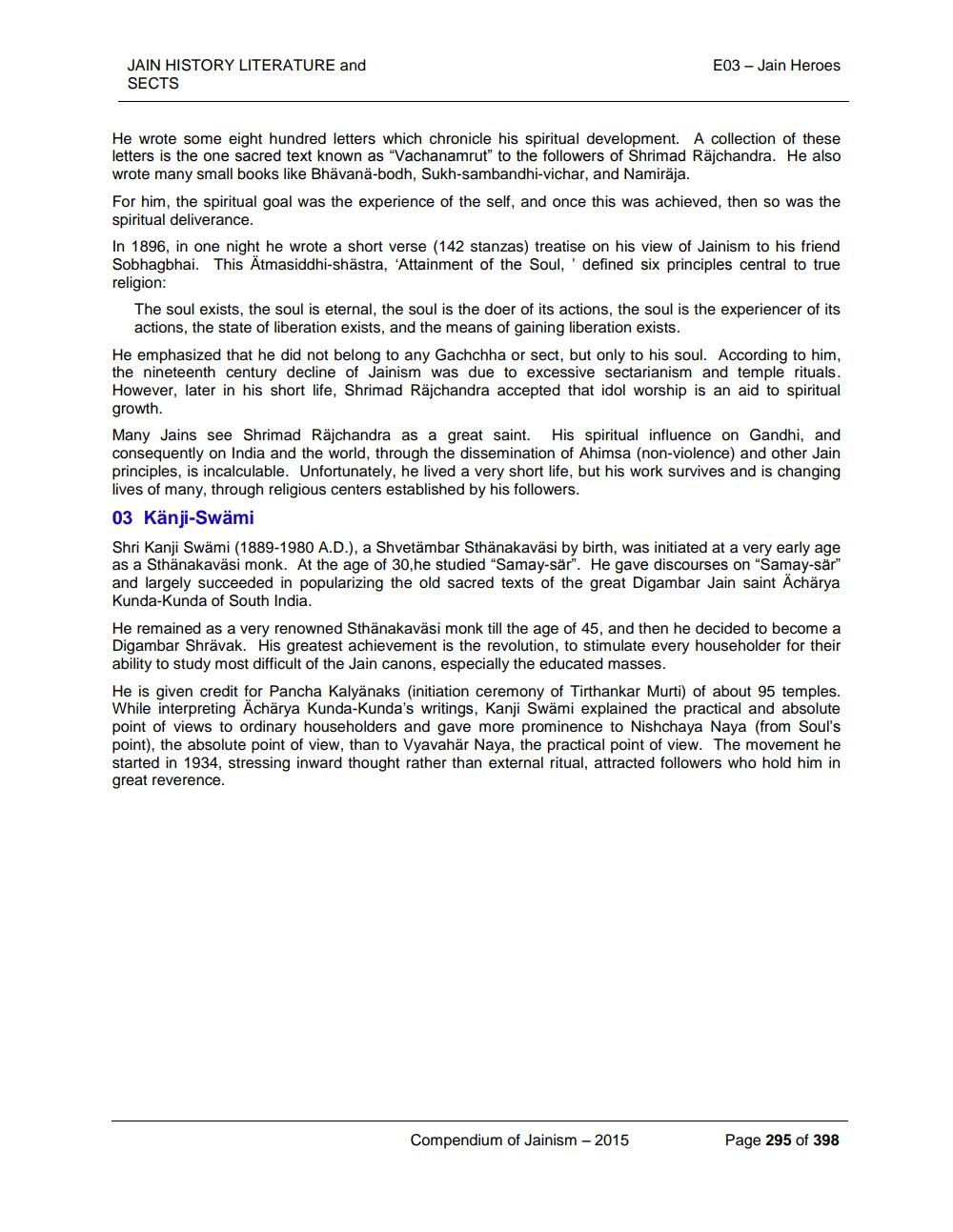________________
JAIN HISTORY LITERATURE and SECTS
E03 - Jain Heroes
He wrote some eight hundred letters which chronicle his spiritual development. A collection of these letters is the one sacred text known as "Vachanamrut" to the followers of Shrimad Räjchandra. He also wrote many small books like Bhavana-bodh, Sukh-sambandhi-vichar, and Namiräja.
For him, the spiritual goal was the experience of the self, and once this was achieved, then so was the spiritual deliverance. In 1896, in one night he wrote a short verse (142 stanzas) treatise on his view of Jainism to his friend Sobhagbhai. This Ätmasiddhi-shästra, 'Attainment of the Soul, 'defined six principles central to true religion:
The soul exists, the soul is eternal, the soul is the doer of its actions, the soul is the experiencer of its actions, the state of liberation exists, and the means of gaining liberation exists.
He emphasized that he did not belong to any Gachchha or sect, but only to his soul. According to him, the nineteenth century decline of Jainism was due to excessive sectarianism and temple rituals. However, later in his short life, Shrimad Räjchandra accepted that idol worship is an aid to spiritual growth. Many Jains see Shrimad Räjchandra as a great saint. His spiritual influence on Gandhi, and consequently on India and the world, through the dissemination of Ahimsa (non-violence) and other Jain principles, is incalculable. Unfortunately, he lived a very short life, but his work survives and is changing lives of many, through religious centers established by his followers. 03 Känji-Swami Shri Kanji Swami (1889-1980 A.D.), a Shvetämbar Sthänakaväsi by birth, was initiated at a very early age as a Sthänakaväsi monk. At the age of 30, he studied "Samay-sär". He gave discourses on "Samay-sär" and largely succeeded in popularizing the old sacred texts of the great Digambar Jain saint Acharya Kunda-Kunda of South India. He remained as a very renowned Sthänakaväsi monk till the age of 45, and then he decided to become a Digambar Shrävak. His greatest achievement is the revolution, to stimulate every householder for their ability to study most difficult of the Jain canons, especially the educated masses. He is given credit for Pancha Kalyanaks (initiation ceremony of Tirthankar Murti) of about 95 temples. While interpreting Acharya Kunda-Kunda's writings, Kanji Swami explained the practical and absolute point of views to ordinary householders and gave more prominence to Nishchaya Naya (from Soul's point), the absolute point of view, than to Vyavahär Naya, the practical point of view. The movement he started in 1934, stressing inward thought rather than external ritual, attracted followers who hold him in great reverence.
Compendium of Jainism - 2015
Page 295 of 398




